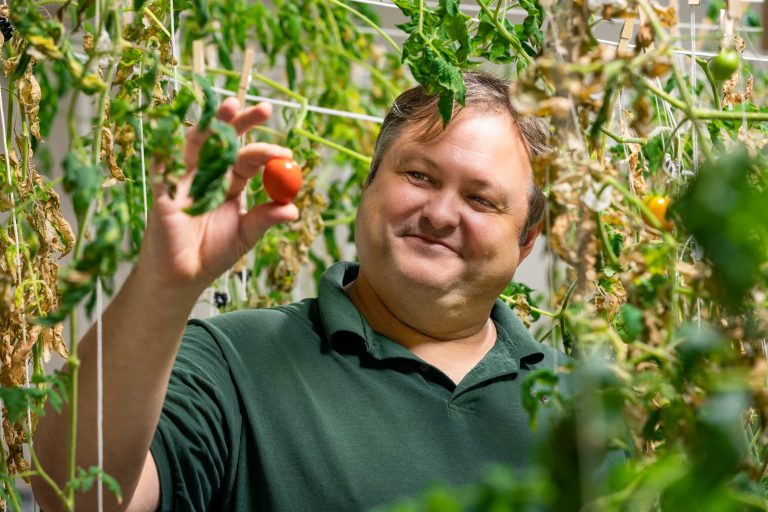Potatoes, tomatoes …. which will grow best on Mars? Researchers are working towards figuring that out, partnering with a global foods company.
Introducing Heinz Tomato Ketchup, Marz Edition.
Astrobiologists at the Aldrin Space Institute at Florida Tech have successfully grown specialized Heinz tomato seeds in simulated Martian soil. The results of the two-year experiment are promising for having condiments – and growing vegetables –on Mars.
You want fries (and ketchup) with that?
“Before now, most efforts around discovering ways to grow in Martian-simulated conditions are short-term plant growth studies,” said biologist Andrew Palmer, who led the research. “What this project has done is look at long-term food harvesting. Achieving a crop that is of a quality to become Heinz Tomato Ketchup was the dream result and we achieved it.”
The results of the collaboration with Heinz (which explains the “z” in Mars) also represents techniques for improved food production in challenging conditions here on Earth.
 Andrew Palmer holds a tomato grown under Mars-like conditions at the Red House. Credit: Florida Tech.
Andrew Palmer holds a tomato grown under Mars-like conditions at the Red House. Credit: Florida Tech.“One of the biggest challenges we face is how to grow in less ideal soil conditions, and this project could help us discover ways to tackle this issue,” said Gary King, head of agriculture at Kraft Heinz, in a press release. “The team successfully yielded a crop of Heinz tomatoes, from the brand’s proprietary tomato seeds, with the exacting qualities that pass the rigorous quality and taste standards to become its iconic ketchup.”
Palmer and a team of more than a dozen students, scientists and technicians worked in a greenhouse, known as the Red House at Florida Tech. The Red House was designed to replicate conditions humans would face when farming on Mars. They used LED lighting that simulated sunlight on Mars, and utilized about 7,800 pounds of analog Martian regolith – soil from the Mohave Desert that mimics many of the characteristics of actual Martian soil. There was also strict temperature control and regular irrigation.
After an initial and successful pilot project with 30 tomato plants, the team moved to a larger project with about 450 tomato plants in individual buckets, working closely with Heinz the entire way.
And if you’ve seen the movie “The Martian,” your next question might be, what type of fertilizer was used. To answer that, we might have to wait for Palmer’s first paper to be published, which is currently under peer review, he said.
The project not only succeeded in growing tomatoes, but the experiment also allowed Heinz to create a limited run of prototype bottles of Heinz Tomato Ketchup, Marz Edition, but also send a bottle on a balloon flight about nearly 23 miles up for a spacey photo op (see lead image). The team said the ketchup and bottled survived temperatures of about minus 94 degrees Fahrenheit before returning to Earth.
Unfortunately, since this project is in its experimental phase, the Marz Edition Ketchup will only be tasted by a very lucky few internally at Heinz. The rest of us might have to wait until a future flight to the Red Planet.
Further reading: Florida Tech press release

